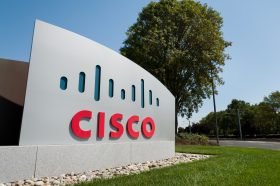Amazon Shaking Up Hybrid Cloud With Linux 2

Amazon over the last month has rolled out its own distribution of Linux, called Linux 2, which could run both in its own public cloud, Amazon Web Services (AWS), as well as on private servers -- and the reaction has been remarkably muted.
In mid-December, Amazon announced that Linux 2 as "the next generation Amazon Linux operating system." It is available to run as an Amazon Machine Image (AMI) for use on Amazon Elastic Compute Cloud (AmazonEC2), and as a Docker container image for use in any Docker-based environment, including Amazon's own Elastic Container Service (Amazon ECS). It's also available as a virtual machine to run on VMware, Oracle VM VirtualBox, and Microsoft Hyper-V virtualization solutions for on-premises development and testing.
The move, which was quietly announced on a blog without a lot of fanfare, extends Amazon's cloud out to hybrid cloud systems and should be raising the eyebrows of competitors in the enterprise computing space. Linux operating systems (OSes) are the bread-and-butter of cloud computing operations, with many enterprise computing companies offering their Linux-owned distributions as a beachhead to a fuller cloud stack. While not all private-cloud players are necessarily quaking in their boots because Amazon is now offering an OS that operates on private servers, this is a significant shakeup in the cloud landscape that should be watched carefully by private cloud tool providers such as Microsoft (MSFT), Oracle (ORCL), Red Hat Inc. (RHAT), VMware Inc. (VMW), and others.
Where's the Reaction?
Coverage of this move in the trade press and analyst community has been surprisingly muted. What's powerful about Amazon's Linux 2 is that it can provide seamless interoperability between private clouds and AWS, especially for those operating in a Docker or container environment. This offers opportunities for integrating a private cloud with AWS.
An article in Barron's did note that some concern among Red Hat fans should be appropriate. Deutsche Bank's Karl Keirstead said this isn't a huge threat to enterprise cloud players such as Red Hat, but that it should be carefully watched:
"The attribute that interests us most is the ability to deploy Amazon Linux on-premise on virtualized servers running VMware or Microsoft hypervisors," writes Keirstead. "Deploying software on-premise is an important move by AWS, thereby giving customers consistency whether running workloads on-premise or in AWS."
He noted that this is "hardly a good thing" for Red Hat (or VMware or Microsoft, for that matter), but that it's important not to overreact.
Beware the Amazon Creep
It may also be important not to under-react. This is classic Amazon creep, in which it sneaks into an adjacent market, quietly undermining the competition by providing a cheaper and more efficient tool. It will be attractive to folks who, for example, are running applications in AWS but are considering building their own private clouds.
By offering Linux 2, Amazon clearly is looking at experimenting with extending its public cloud to a hybrid offering that can compete with Microsoft, which has integrated enterprise cloud systems that are integrated with its public Azure cloud.
Steve Garrison, VP of marketing and business development at Zerostack, a vendor of private-cloud software, says a battle is shaping up between vertically oriented players with both public and private cloud (such as Microsoft, and now, Amazon), versus those that are selling specific components (i.e. Red Hat). The tradeoff for customers is whether they want to focus on buying most of their stack from one vendor, and risk lock-in, or opt for a best-or-breed approach and integrate themselves.
"There is a war or clash between vendors trying to become a vertical offering, get it all from me -- AWS for example with this Linux 2 offering,” said Garrison. “Buying from a vertically integrated player gives you simplicity with the threat of lock in. Buying from a horizontal player gives you flexibility and choice."
The move to Linux 2 and the private, or hybrid, cloud should be viewed as important move for Amazon, possibly foretelling a more aggressive move into the hybrid cloud space. Other trends such as containers and serverless computing bode well by making workloads and applications more portable across clouds and open up new opportunities for Amazon, which has become of the most dominant players in IT with its crafty methods of entering new markets













